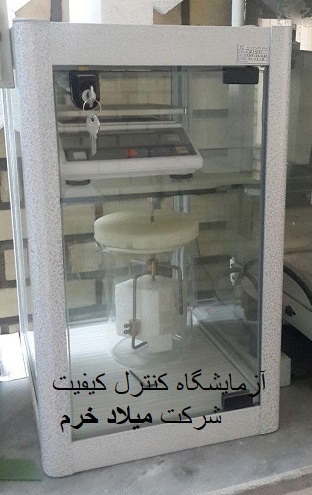Milad Khorram Co. is proud to have been able to produce the product in accordance with the national standard of Iran for the first time in the province and the west of the country. In 2010, based on the order to amend the rules and regulations of the Organization of Standards and Industrial Research of Iran approved in 2002 in the implementation of the approvals of the Supreme Council of Standards, Milad Khorram Industrial Manufacturing Company was allowed to comply with national standard No. 11108 of the Iranian standard for blocks and sheets Polystyrene foam with the brand name Milad Foam.
Quality control unit in Milad Khoram Company has 2 main duties:
1.Preparation of production process recipe
2.Ultimate product quality control test
We will continue to explain each
1.Preparation of production process recipe:
Due to the existence of several types of raw materials in the market and the variety of the production formula that fits each type of product, achieving the desired quality requires technical knowledge and continuous monitoring of the production process. At each stage of the process of producing polystyrene foam needs to monitor the product characteristics of each process. Quality control laboratory by sampling the outputs of each process and measuring the characteristics (density, expansion percentage, etc.) will make the best production recipe for each part. It is producing from the process.
2.Qualitative testing of the final product:
There are 4 titles below.
a.Density measurement
B.Flame Test
c.Resistance Test
D. Dimensions and appearance of blocks
We will continue to test each of the tests.
a.Density measurement:
The density of kilograms per cubic meter is calculated using this equation.
ρ=M/V
M = Mass of the test in kilograms
V = Volume of the test in cubic meters
Dry the test samples before weighing in an oven with a degree of 23 °C so that the results of weighing at least 12 hours do not change more than one percent of their average.
First, fill the cylindrical container with distilled water free of dissolved air. Before immersing the tests in water. We measure its dimensions and then put the test in a cage and immerse it so that the water level is approximately 100mm to the test point and then we take its mass.


B. Flame Test:
Tighten the test specimen in the test holder so that the longer edge of the surface with the end of the frame is placed in a line, and the burner is tilted at a 45° angle to the vertical axis and forward it horizontally until the flame reaches the predetermined point of contact on the top edge of the test at a distance of 10 mm from the inner edge of the test holder. Turn on the timer at the moment the flame comes into contact with the test and flame for 15 seconds We keep the light and then we move the torch steadily and slowly back.


C. Resistance Test:
Fracture threshold of block sample due to pressure force applied on block with width of 50 cm and thickness of 25 cm in laboratory press pressure should be greater than 2000 Nits per 30 cm length of block. This value is less than maximum pressure during concreting.

D. Dimensions and appearance of blocks:
After cutting the CNC, the main dimensions of the blocks (length, width and height) and sub-dimensions (edge size, groove size, groove size, bevel size) are reviewed.
The blocks should have a healthy and integrated appearance. The surface of the block should be relatively smooth and there should be no apparent gap between the polystyrene beads.


